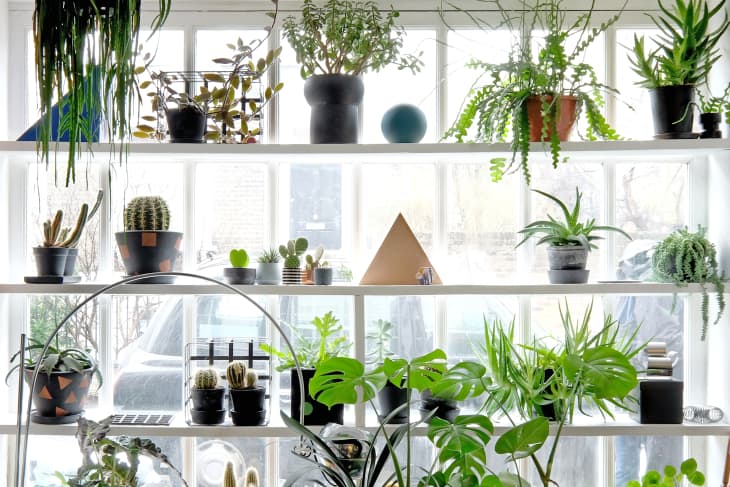6 Houseplants That Are a Little Weird, but You’ll Want To Have Anyway
There’s nothing like coming acrossa houseplantthat stops you in your tracks and makes you go “Wow, Ineedthis plant in my life!” Whether they are funky, wacky, or totally elegant,some plantsare just irresistible.
These unusual plants are shooting to the top of our “must-have” list and gaining traction among collectors and plant parents. They’re just as rare as they are stunning.
Rock tassel fern (Lycopodium squarrosum)
What’s not to love about this prehistoric plant that looks like it’s straight from Jurassic Park? While it carries the “fern” name, it’s actually park of the club moss familyLycopodiaceae. It has long, draping tassels that can grow up to nine feet long in prime conditions.
Rock tassel ferns prefer indirect light and moist soil. While these plants are totally rad, they’re also difficult to find and are quite expensive. Here’s to putting one on your dream plant list and hoping it ends up as common as aPilea peperomioides.
Green velvet alocasia (Alocasia Micholitziana“Frydek”)
This plantis a total stunner. The arrow-shaped leaves have thick, white veins and a soft, velvety texture. While it’s absolutely gorgeous, growing it can be stressful: Alocasias need a lot of humidity to keep their leaves from browning around the edges. This plant loves to have moist soil, but hates sitting in water. Finding its “happy place” is hard work, but it will pay off. Just know these plants thrive in a warm, humid greenhouse environment with filtered, indirect light.
Shingle plant (Rhaphidophora cryptantha)
Years ago, I was wandering around a local greenhouse and saw one of these beauties growing up some wood—and I was hooked. Not only does the stem cling to the vertical surface that it’s climbing, the leaves do too. This creates a very interesting, eye-catching growth pattern.
Shingle plantslove warmer temperatures, so don’t let your indoor temps drop below 60 degrees. This plant also grows best in bright, indirect light.
Dolphin succulent (Senecio peregrinus)
These little cutieshave everyone flocking to their local plant shops. They require the same care as a string of pearls plant—and even drape like one—but look like dolphins instead of pearls! It’s a wicked cool plant, but difficult to find since it’s a hybrid. Try searching online or calling up your local shop before venturing out.
Black bat flower (Tacca chantrieri)
This planttook me by surprise years ago when I was visiting a greenhouse in North Carolina. I rounded a corner and saw this beautiful plant with a huge open flower that resembled a bat’s face. The flower even sprouts “whiskers” to complete the look.
TheTacca chantrieriblooms in the late summer and early fall. Water moderately and give it indirect light for the best results.
Stephania erecta
This little nugget of a planthas taken social media by storm. TheStephania erectasprouts from its caudex, which resembles a bulb. The plant produces vertical-growing vines that are very thin and delicate with wide, deep green leaves. The effect is almost cartoonish, which adds to the plant’s appeal.
TheStephania erectadoes best with indirect light and moderate watering. The plant goes dormant in the winter when the foliage dies back, which is when you should begin watering it very minimally—perhaps only once a month. Do not overwater, as the caudex will rot and your plant will die. That being said, if you pot this plant in a terracotta pot, prepare to water more frequently.
Tip: Lissa (@plantenstudioon Insta) has avery comprehensive care guideon her blog!

